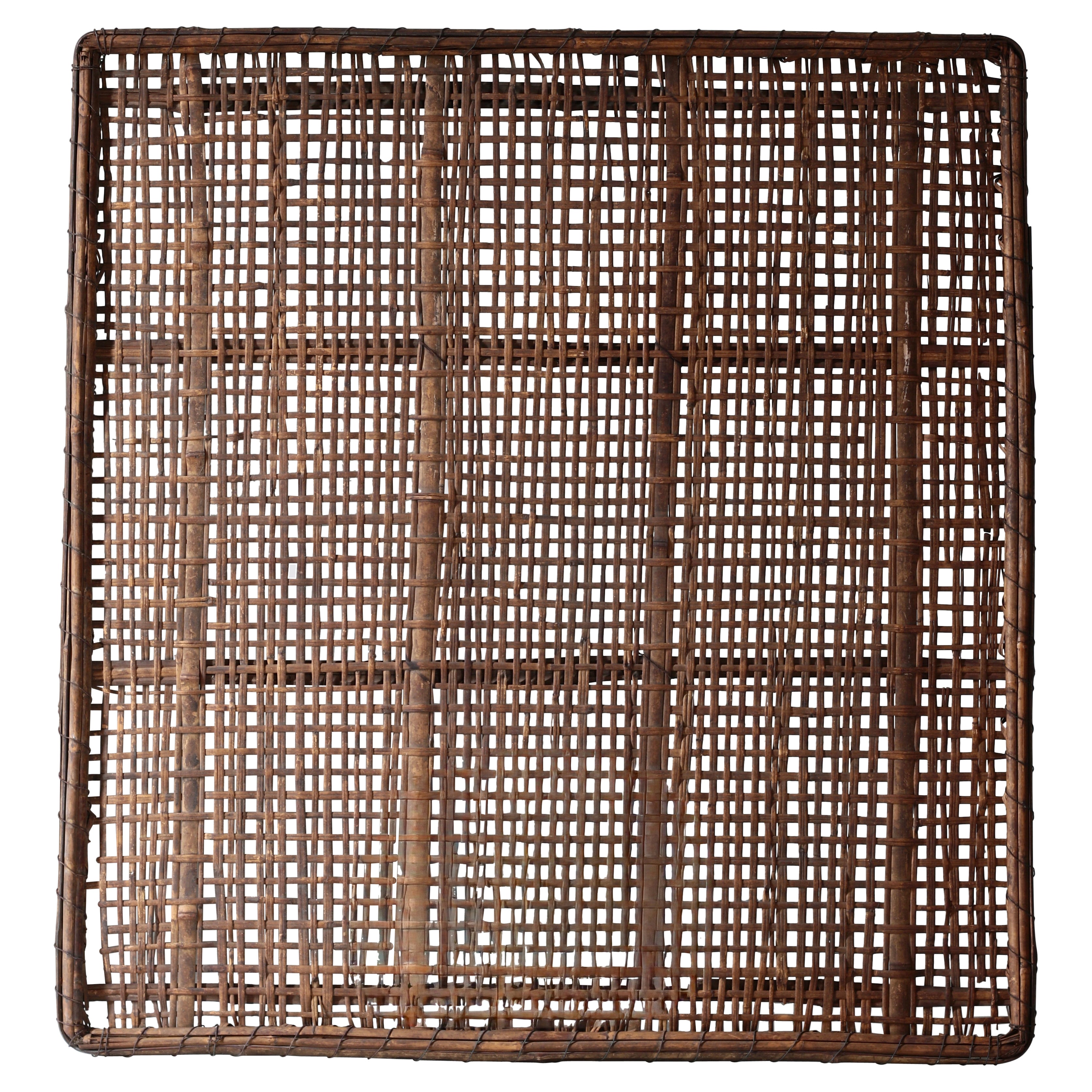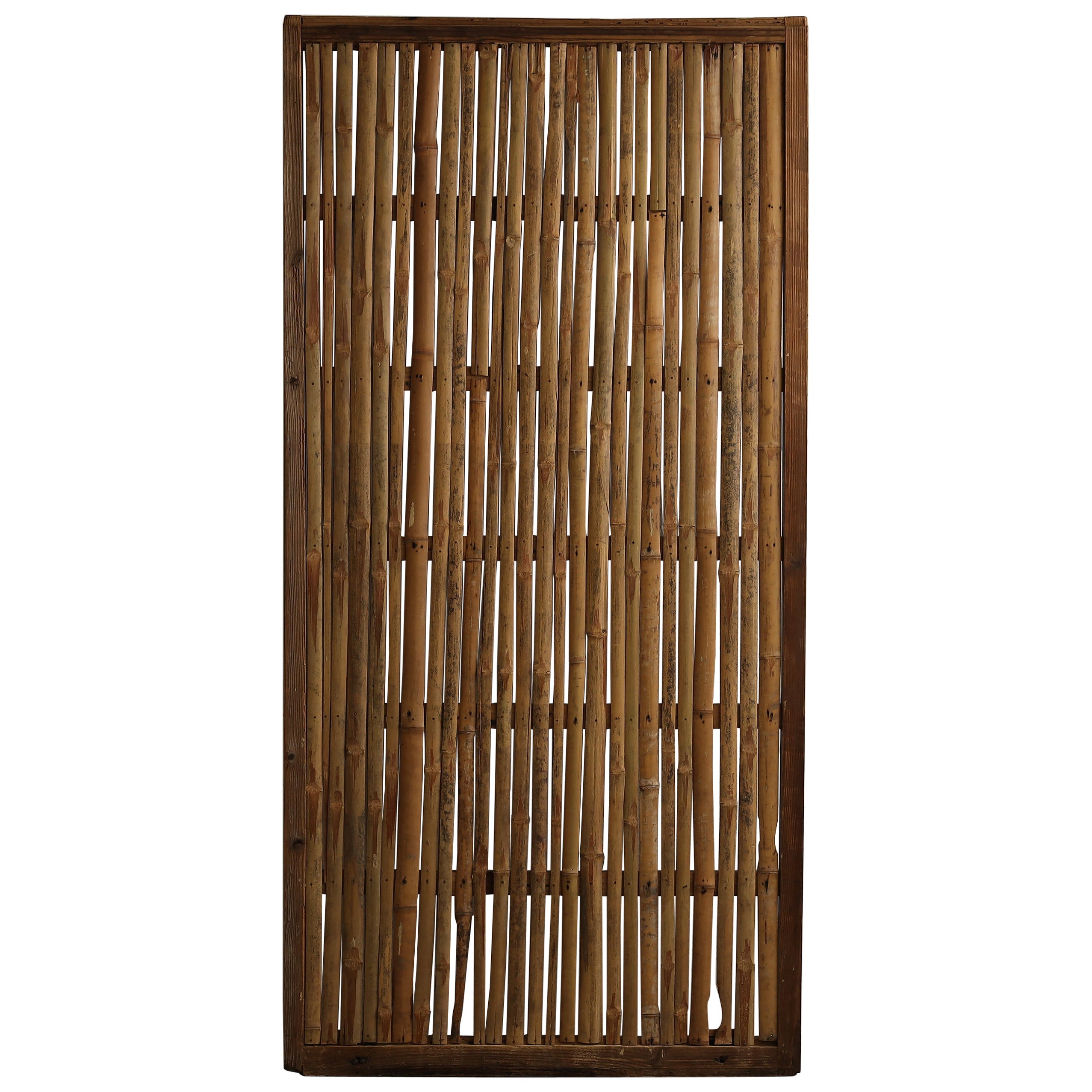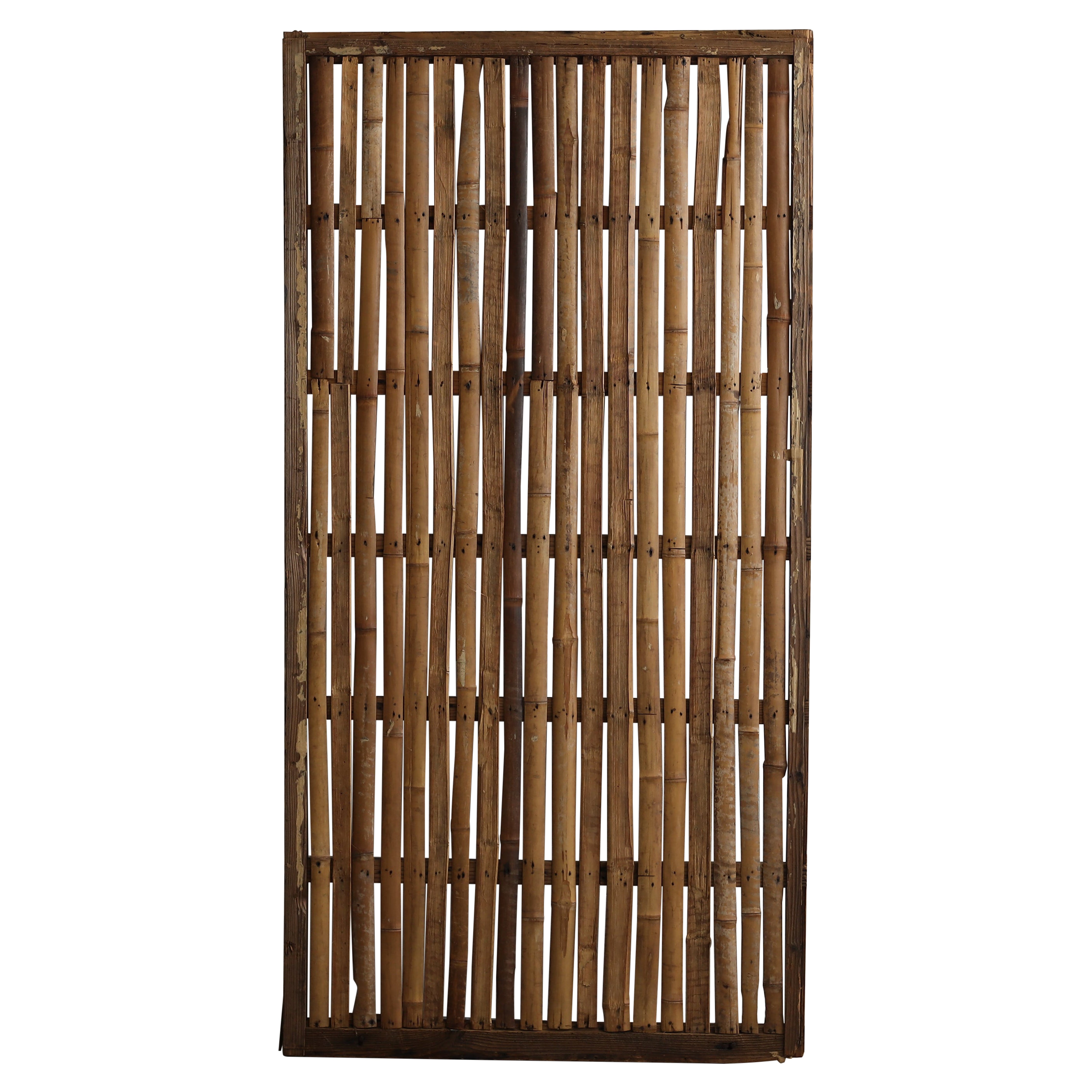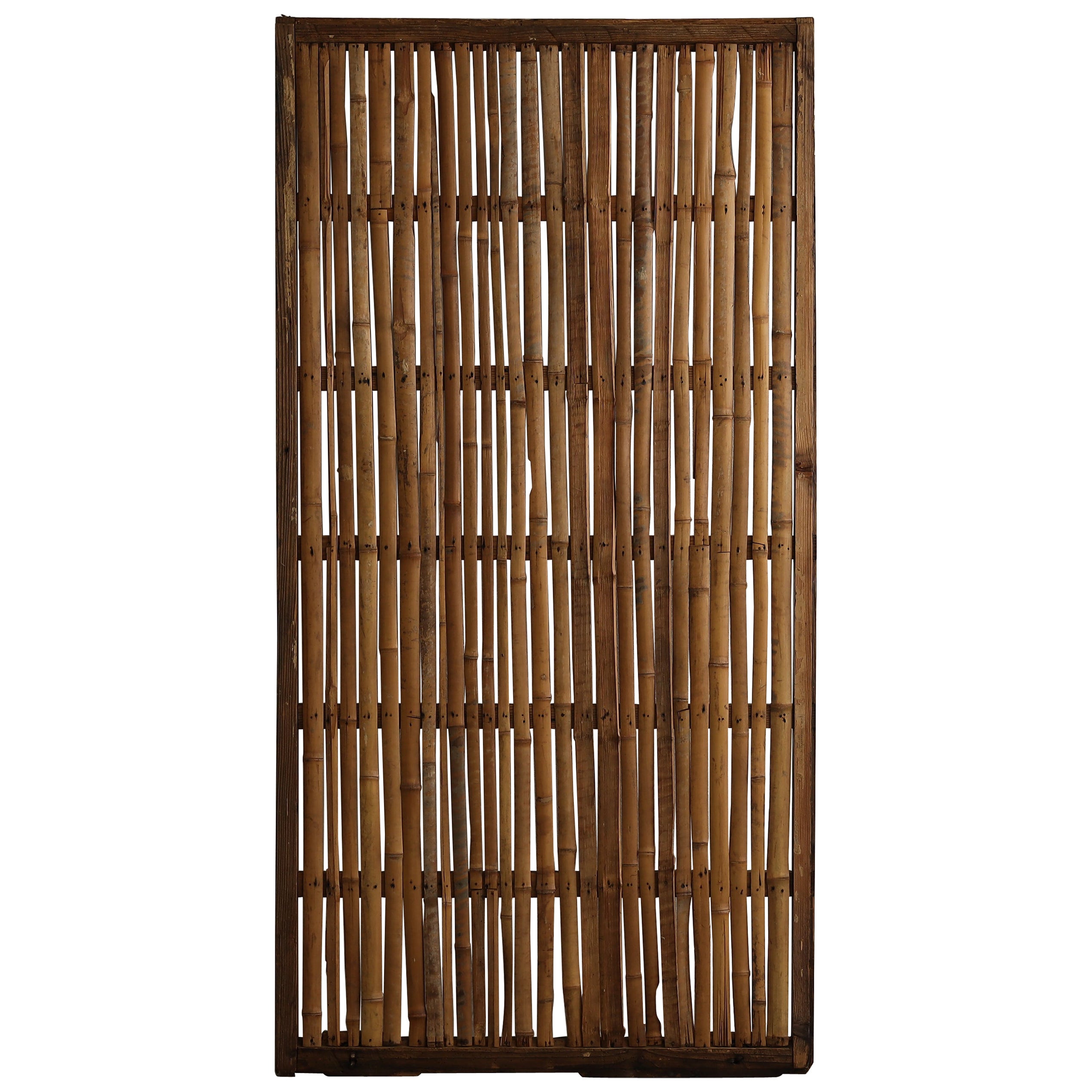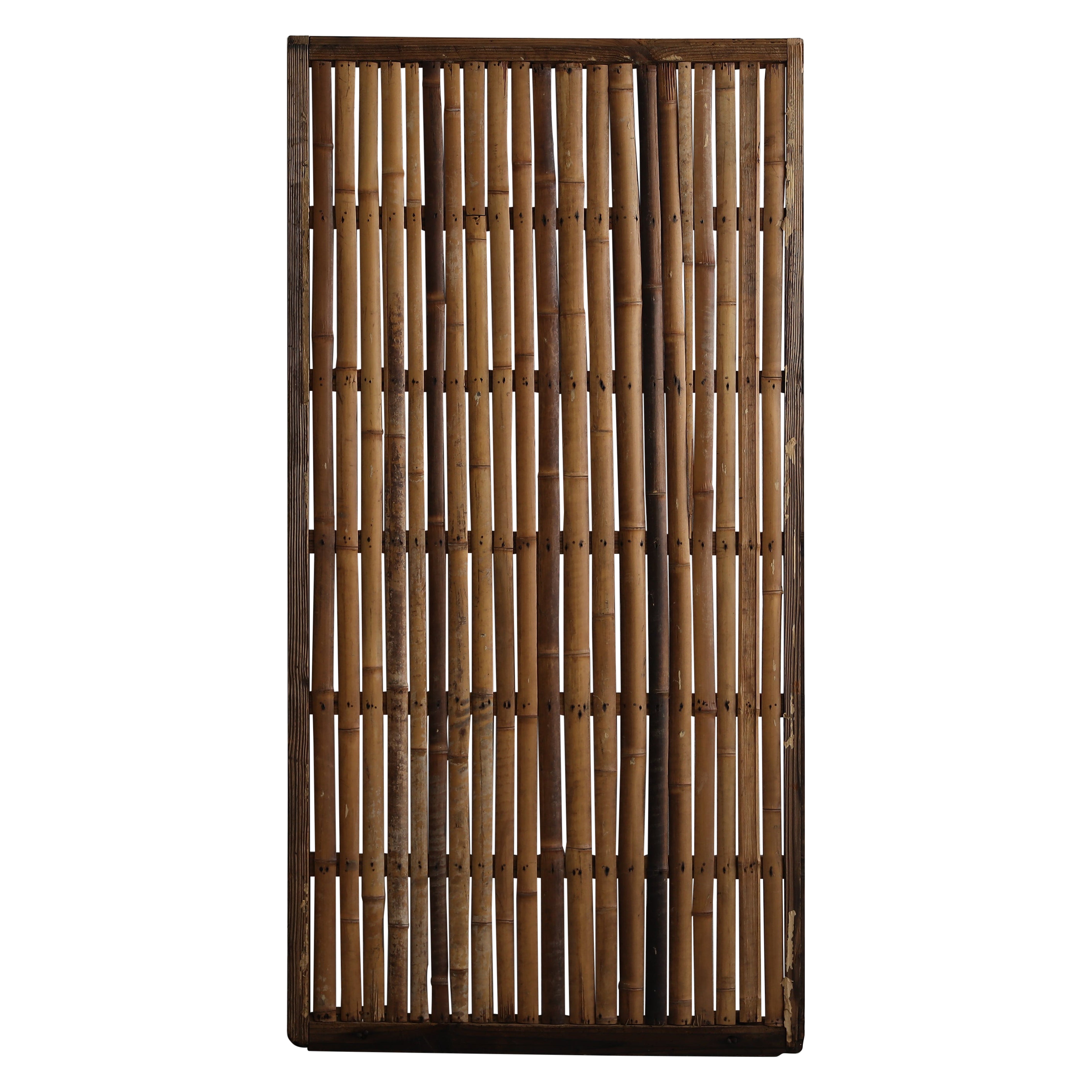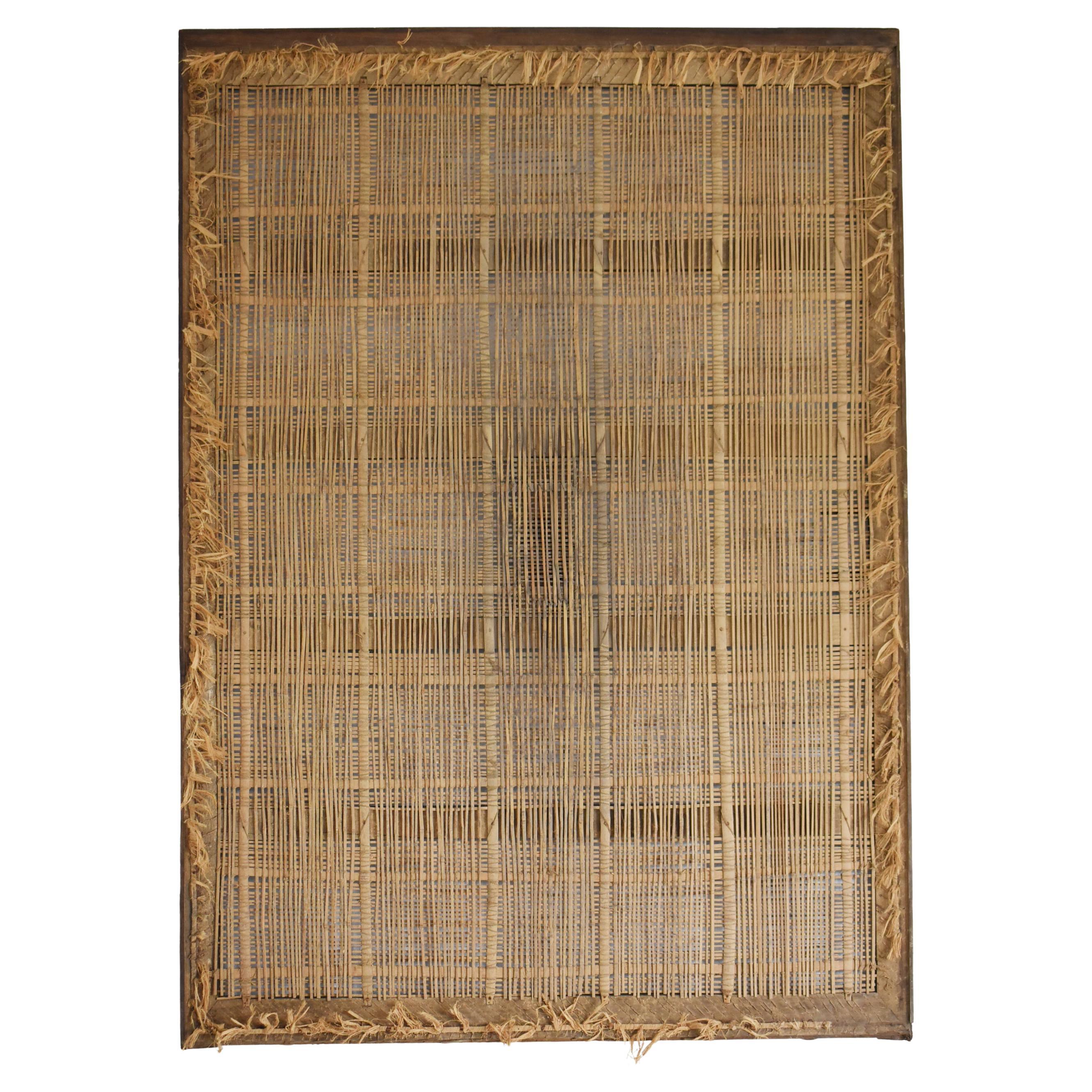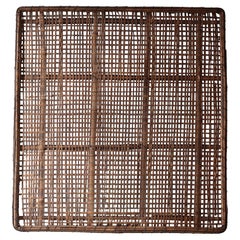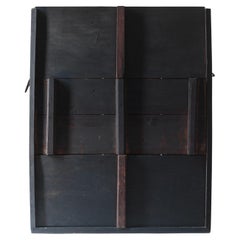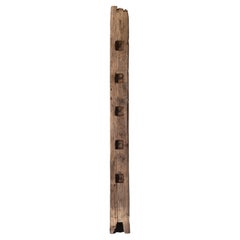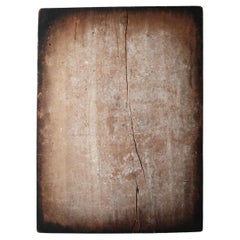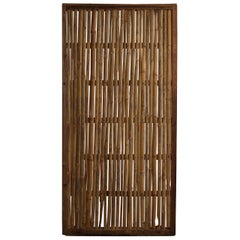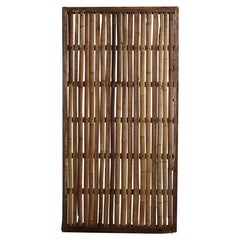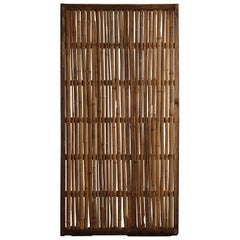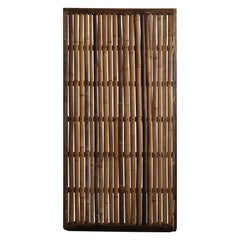Items Similar to Japanese Antique Bamboo Door / Wall Decoration / 1868-1912s / Wabi-Sabi
Want more images or videos?
Request additional images or videos from the seller
1 of 21
Japanese Antique Bamboo Door / Wall Decoration / 1868-1912s / Wabi-Sabi
$3,000
£2,272.49
€2,621.82
CA$4,206.35
A$4,688.97
CHF 2,467.97
MX$56,843.39
NOK 31,421.88
SEK 29,214.74
DKK 19,568.69
About the Item
This is a wall decoration using an old Japanese door.
It is thought to date from the Edo to Meiji period.
Originally it was a very heavy door with earth and plaster on the surface, but we removed all the earth and plaster to reveal the bamboo inside.
This was used for the door of an old warehouse called "kura". In Japan, old "kura" is considered a symbol of wealth. Warehouses have been used not only to store food, but also to store important books, treasures, and things that have been passed down from generation to generation, but their number is decreasing due to aging.
The base is made of bamboo woven into a lattice pattern, called "takekomai", and is fixed with hemp string (hemp or ramie).
It is also recommended to use a door used in a Japanese "kura" to decorate the wall like an abstract painting using natural materials.
Weight: 20kg
- Dimensions:Height: 73.23 in (186 cm)Width: 41.34 in (105 cm)Depth: 2.56 in (6.5 cm)
- Style:Meiji (Of the Period)
- Materials and Techniques:
- Place of Origin:
- Period:
- Date of Manufacture:1868-1912s
- Condition:Refinished. Additions or alterations made to the original: I removed the earthen wall and plaster. Wear consistent with age and use.
- Seller Location:Iwate-gun Shizukuishi-cho, JP
- Reference Number:1stDibs: LU9601246160232
About the Seller
5.0
Platinum Seller
Premium sellers with a 4.7+ rating and 24-hour response times
Established in 2020
1stDibs seller since 2023
72 sales on 1stDibs
Typical response time: 1 hour
- ShippingRetrieving quote...Shipping from: Iwate-gun Shizukuishi-cho, Japan
- Return Policy
Authenticity Guarantee
In the unlikely event there’s an issue with an item’s authenticity, contact us within 1 year for a full refund. DetailsMoney-Back Guarantee
If your item is not as described, is damaged in transit, or does not arrive, contact us within 7 days for a full refund. Details24-Hour Cancellation
You have a 24-hour grace period in which to reconsider your purchase, with no questions asked.Vetted Professional Sellers
Our world-class sellers must adhere to strict standards for service and quality, maintaining the integrity of our listings.Price-Match Guarantee
If you find that a seller listed the same item for a lower price elsewhere, we’ll match it.Trusted Global Delivery
Our best-in-class carrier network provides specialized shipping options worldwide, including custom delivery.More From This Seller
View AllJapanese Antique Bamboo Panel / Wall Decoration / 1868-1912s / Wabi-Sabi
Located in Iwate-gun Shizukuishi-cho, Iwate Prefecture
This is an old Japanese bamboo wall decoration.
It is believed to have been used as a farm tool around the Meiji period.
Perhaps it was used as a tool to transport crops.
The latt...
Category
Antique Late 19th Century Japanese Meiji Decorative Art
Materials
Bamboo
Japanese Antique Black Cabinet / Japanese Bandaji / 1800-1860s / Wabi-Sabi
Located in Iwate-gun Shizukuishi-cho, Iwate Prefecture
This is a storage furniture used in the countryside of Japan.
The main material is cedar, and it was used in the Tohoku region.
It was probably made as storage furniture for grains a...
Category
Antique 19th Century Japanese Edo Cabinets
Materials
Wood, Cedar, Straw
Japanese Antique Aged Pillars / Wall Decoration / Wabi-sabi Primitive
Located in Iwate-gun Shizukuishi-cho, Iwate Prefecture
This is a wall decoration made from a pillar from an old Japanese hut.
It was used as a pillar in a horse stable, and together with its companion pillar, it was used as a fence by i...
Category
Early 20th Century Japanese Primitive Decorative Art
Materials
Iron
Japanese Antique Wooden Board / Wall Decoration Abstract Art / Wabi-Sabi
Located in Iwate-gun Shizukuishi-cho, Iwate Prefecture
This is an old Japanese workboard.
It was called "Mochiita" and was used as a workbench for kneading flour.
It seems to be around the Meiji period.
The board is thought to be pine...
Category
Antique Late 19th Century Japanese Meiji Decorative Art
Materials
Wood
Japanese Antique Exhibition Table / Wall Decoration / 1868-1912s / Wabi-sabi
Located in Iwate-gun Shizukuishi-cho, Iwate Prefecture
This is an old Japanese wooden work board.
The wood is cedar, and due to long-term use, the black color around the edges remains, and the color has peeled off only in the middle. Th...
Category
Antique Late 19th Century Japanese Meiji Antiquities
Materials
Wood, Cedar
Japanese Antique Tin Plate Art / Wall Decoration / Wabi-sabi
Located in Iwate-gun Shizukuishi-cho, Iwate Prefecture
This is an old Japanese tin panel.
The rust caused by natural aging is expressed like art.
The exact purpose is unknown, but it seems that it was originally used in a place where fi...
Category
20th Century Japanese Showa Decorative Art
Materials
Tin
You May Also Like
Japanese Antique Bamboo Sliding Door, Object Mingei Art Panel, Wabisabi Door(2)
Located in Katori-Shi, 12
This is an antique Japanese bamboo door.
It is from the Meiji period (1860s-1900s).
It is made mainly of cedar and bamboo.
It has a simple design that conveys the charm of the mater...
Category
Early 20th Century Japanese Meiji Doors and Gates
Materials
Bamboo, Wood
Japanese Antique Bamboo Sliding Door, Object Mingei Art Panel, Wabisabi Door(4)
Located in Katori-Shi, 12
This is an antique Japanese bamboo door.
It is from the Meiji period (1860s-1900s).
It is made mainly of cedar and bamboo.
It has a simple design that conveys the charm of the mater...
Category
Early 20th Century Japanese Meiji Doors and Gates
Materials
Bamboo, Wood
Japanese Antique Bamboo Sliding Door, Object Mingei Art Panel, Wabisabi Door(1)
Located in Katori-Shi, 12
This is an antique Japanese bamboo door.
It is from the Meiji period (1860s-1900s).
It is made mainly of cedar and bamboo.
It has a simple design that conveys the charm of the mater...
Category
Early 20th Century Japanese Meiji Doors and Gates
Materials
Wood, Bamboo
Japanese Antique Bamboo Sliding Door, Object Mingei Art Panel, Wabisabi Door(3)
Located in Katori-Shi, 12
This is an antique Japanese bamboo door.
It is from the Meiji period (1860s-1900s).
It is made mainly of cedar and bamboo.
It has a simple design that conveys the charm of the mater...
Category
Early 20th Century Japanese Meiji Doors and Gates
Materials
Bamboo, Wood
Japanese Antique Huge Woven Bamboo Lath Door 1860s-1900s / Abstract Art Wabisabi
By Axel Vervoordt
Located in Chōsei District Nagara, JP
This is an antique large takekomai (woven bamboo lath) door from Japan, crafted during the Meiji period (1860s–1900s). It is made from chestnut wood, bamboo, and straw. Once covered ...
Category
Antique Late 19th Century Japanese Meiji Decorative Art
Materials
Bamboo, Straw, Chestnut
Japanese Antique Door "Wall Decoration" 1860s-1900s / Abstract Art Wabi Sabi
Located in Sammu-shi, Chiba
This was a very old Japanese warehouse (kura) window sliding door.
It was made during the Meiji period (1860s-1900s).
The frame is made of cedar wood and the lattice is bamboo.
It w...
Category
Early 20th Century Japanese Meiji Decorative Art
Materials
Bamboo, Cedar
